mapedit - interactively edit spatial data in R
The R ecosystem offers a powerful set of packages for geospatial
analysis. For a comprehensive list see the CRAN Task View: Analysis of
Spatial Data. Yet,
many geospatial workflows require interactivity for smooth uninterrupted
completion. With new tools, such as htmlwidgets, shiny, and crosstalk,
we can now inject this useful interactivity without leaving the R
environment. In the first phase of the
mapedit project, we have
focused on experimenting and creating proof of concepts for the
following three objectives:
-
drawing, editing, and deleting features,
-
selecting and querying of features and map regions,
-
editing attributes.
Install mapedit
To run the code in the following discussion, please install with
devtools::install_github. Please be aware that the current
functionality is strictly a proof of concept, and the API will change
rapidly and dramatically. Also mapedit's older sibling
mapview will greatly enhance
our abilities, so we strongly recommend installing it even though
mapview is not a requirement. mapedit depends on
leaflet.extras, which
is currently not on CRAN, so we will also need to install it.
devtools::install_github("r-spatial/mapedit")
# although not necessary for mapedit,
# mapview will also be very helpful, and
# and we will use throughout this post
devtools::install_github("r-spatial/mapview")
devtools::install_github("bhaskarvk/leaflet.extras")
Drawing, Editing, Deleting Features
We would like to set up an easy process for CRUD (create, read, update,
and delete) of map features. The function editMap demonstrates a first
step toward this goal.
Proof of Concept 1 | Draw on Blank Map
To see how we might add some features, let’s start with a blank map, and
then feel free to draw, edit, and delete with the Leaflet.Draw toolbar
on the map. Once finished drawing simply press “Done”.
library(mapview)
library(mapedit)
what_we_created <- mapview() %>%
editMap()
editMap returns a list with drawn, edited, deleted, and finished
features as simple features. In this
case, if we would like to see our finished creation we can focus on
what_we_created$finished. Since the return value is simple features,
the easiest way to interactively explore what we just created will be to
use mapview.
mapview(what_we_created$finished)
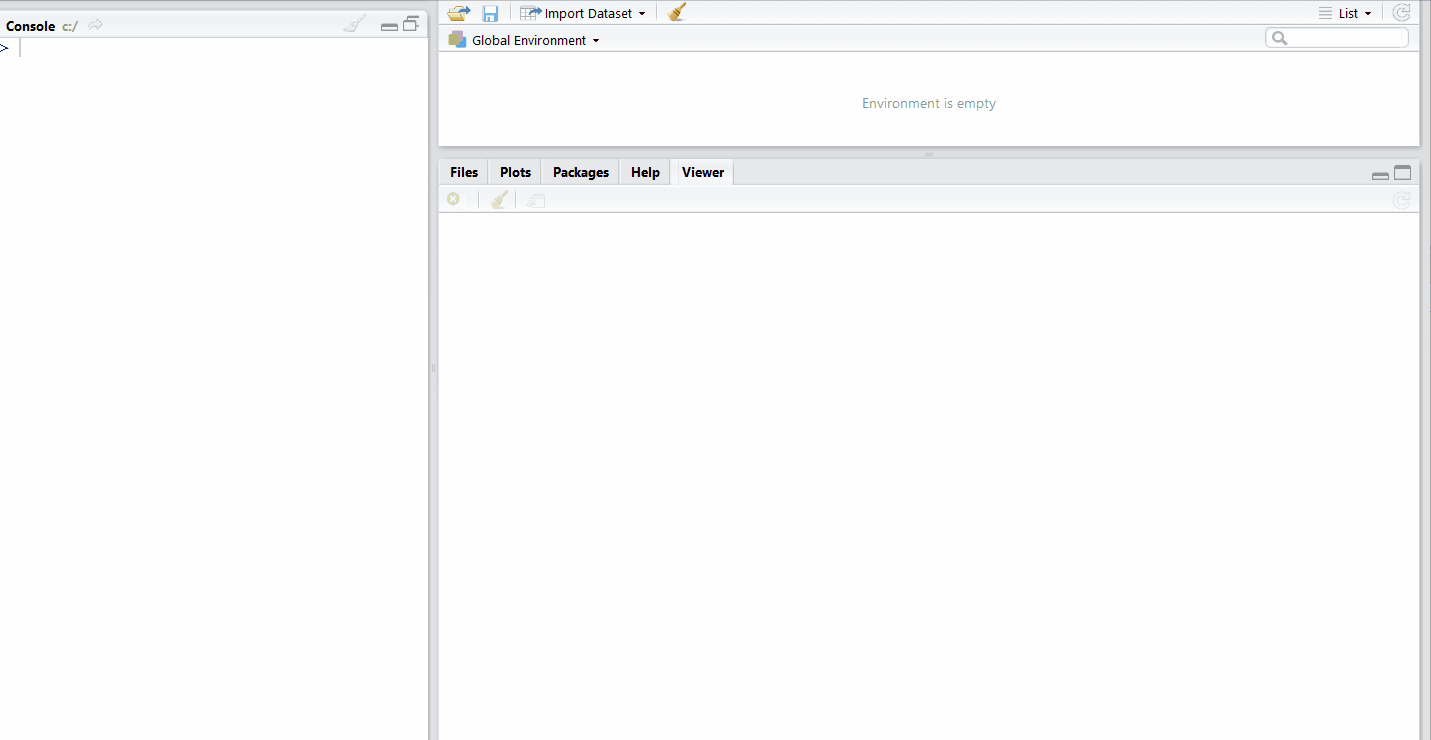
Proof of Concept 2 | Edit and Delete Existing Features
As an extension of the first proof of concept, we might like to edit and/or delete existing features. Let’s play Donald Trump for this exercise and use the border between Mexico and the United States for California and Arizona. For the sake of the example, let’s use a simplified polyline as our border. As we have promised we want to build a wall, but if we could just move the border a little in some places, we might be able to ease construction.
library(sf)
# simplified border for purpose of exercise
border <- st_as_sfc(
"LINESTRING(-109.050197582692 31.3535554844322, -109.050197582692 31.3535554844322, -111.071681957692 31.3723176640684, -111.071681957692 31.3723176640684, -114.807033520192 32.509681296831, -114.807033520192 32.509681296831, -114.741115551442 32.750242384668, -114.741115551442 32.750242384668, -117.158107738942 32.5652527715121, -117.158107738942 32.5652527715121)"
) %>%
st_set_crs(4326)
# plot quickly for visual inspection
plot(border)
Since we are Trump, we can do what we want, so let’s edit the line to
our liking. We will use mapview for our interactive map since it by
default gives us an OpenTopoMap layer. With our new border and fence, we
will avoid the difficult mountains and get a little extra beachfront.
library(mapview)
library(mapedit)
new_borders <- mapview(border) %>%
editMap("border")
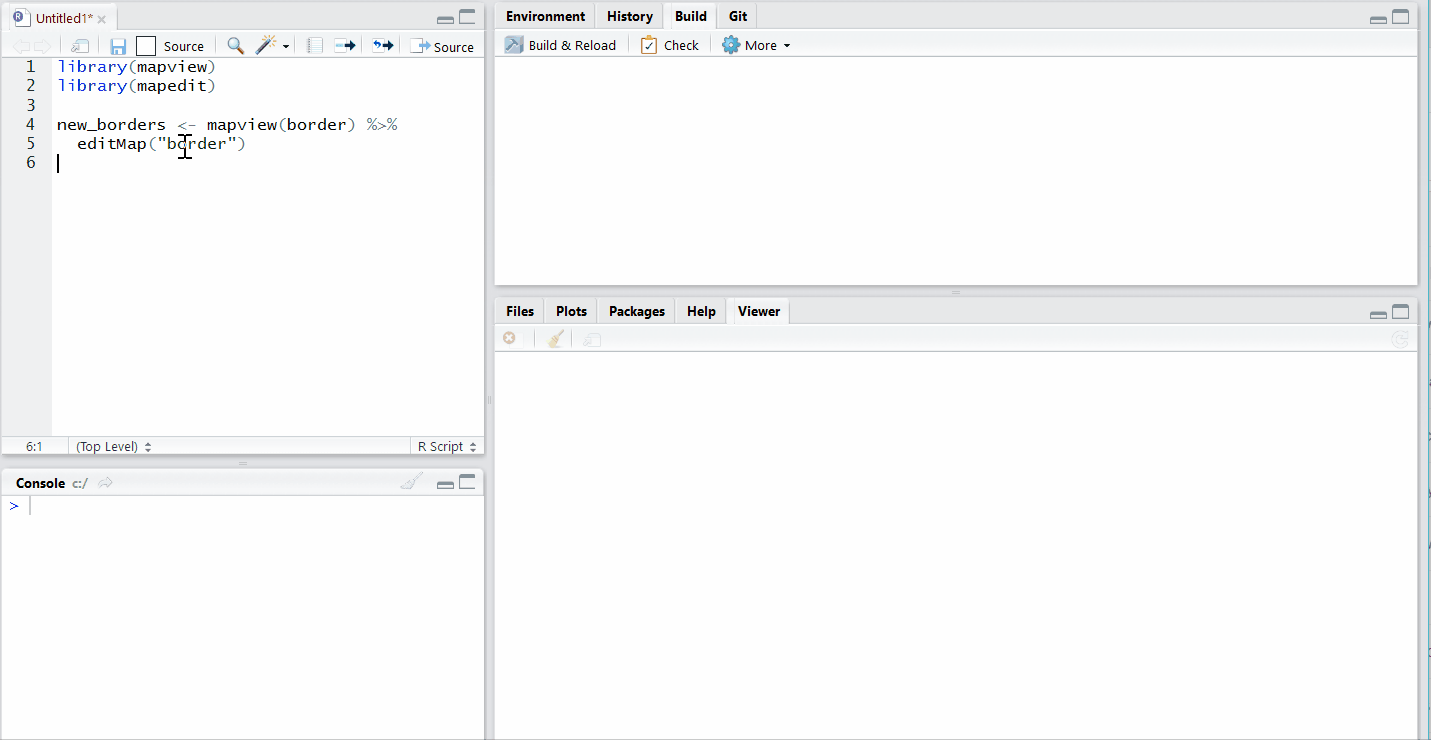
Now, we can quickly inspect our new borders and then send the coordinates to the wall construction company.
mapview(new_borders$drawn)
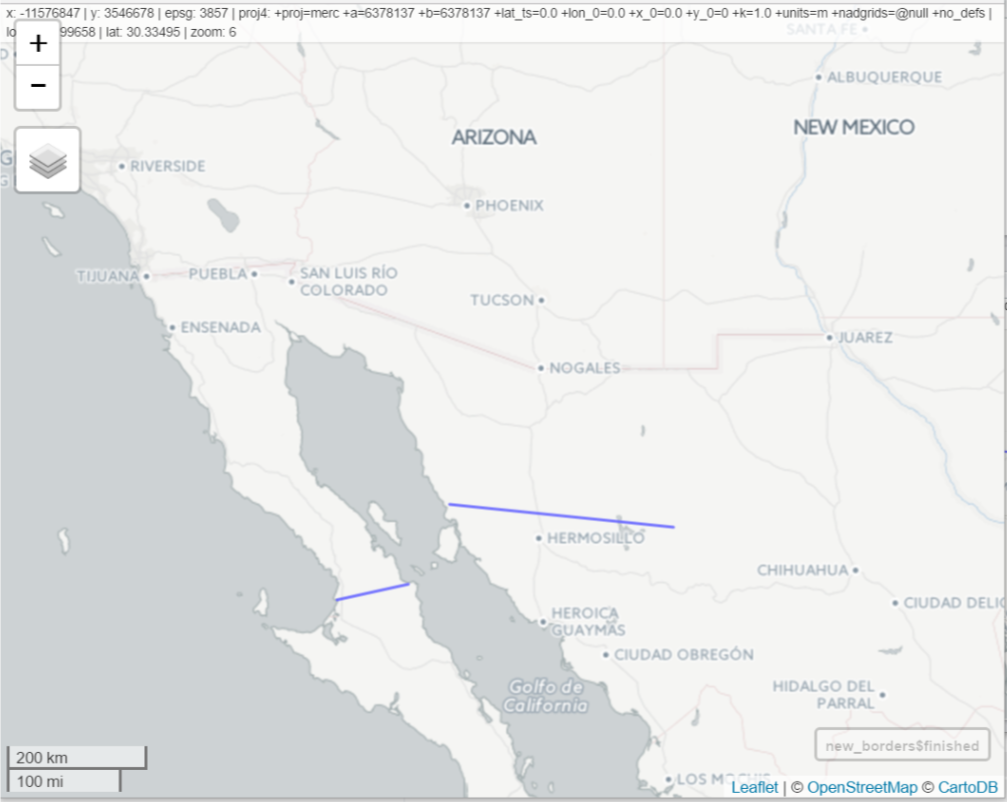
Disclaimers
If you played enough with the border example, you might notice a couple
of glitches and missing functionality. This is a good time for a
reminder that this is alpha and intended as a proof of concept. Please
provide feedback, so that we can insure a quality final product. In this
case, the older version of Leaflet.Draw in RStudio Viewer has some
bugs, so clicking an existing point creates a new one rather than
allowing editing of that point. Also, the returned list from editMap
has no knowledge of the provided features.
Selecting Regions
The newest version of leaflet provides
crosstalk support, but support
is currently limited to addCircleMarkers. This functionality is
enhanced by the sf use of list columns and integration with dplyr
verbs. Here is a quick example with the breweries91 data from
leaflet.
library(crosstalk)
library(mapview)
library(sf)
library(shiny)
library(dplyr)
# convert breweries91 from mapview into simple features
# and add a Century column that we will use for selection
brew_sf <- st_as_sf(breweries91) %>%
mutate(century = floor(founded/100)*100) %>%
filter(!is.na(century)) %>%
mutate(id=1:n())
pts <- SharedData$new(brew_sf, key = ~id, group = "grp1")
ui <- fluidPage(
fluidRow(
column(4, filter_slider(id="filterselect", label="Century Founded", sharedData=pts, column=~century, step=50)),
column(6, leafletOutput("leaflet1"))
),
h4("Selected points"),
verbatimTextOutput("selectedpoints")
)
server <- function(input, output, session) {
# unfortunatly create SharedData again for scope
pts <- SharedData$new(brew_sf, key = ~id, group = "grp1")
lf <- leaflet(pts) %>%
addTiles() %>%
addMarkers()
not_rendered <- TRUE
# hack to only draw leaflet once
output$leaflet1 <- renderLeaflet({
if(req(not_rendered,cancelOutput=TRUE)) {
not_rendered <- FALSE
lf
}
})
output$selectedpoints <- renderPrint({
df <- pts$data(withSelection = TRUE)
cat(nrow(df), "observation(s) selected\n\n")
str(dplyr::glimpse(df))
})
}
shinyApp(ui, server)
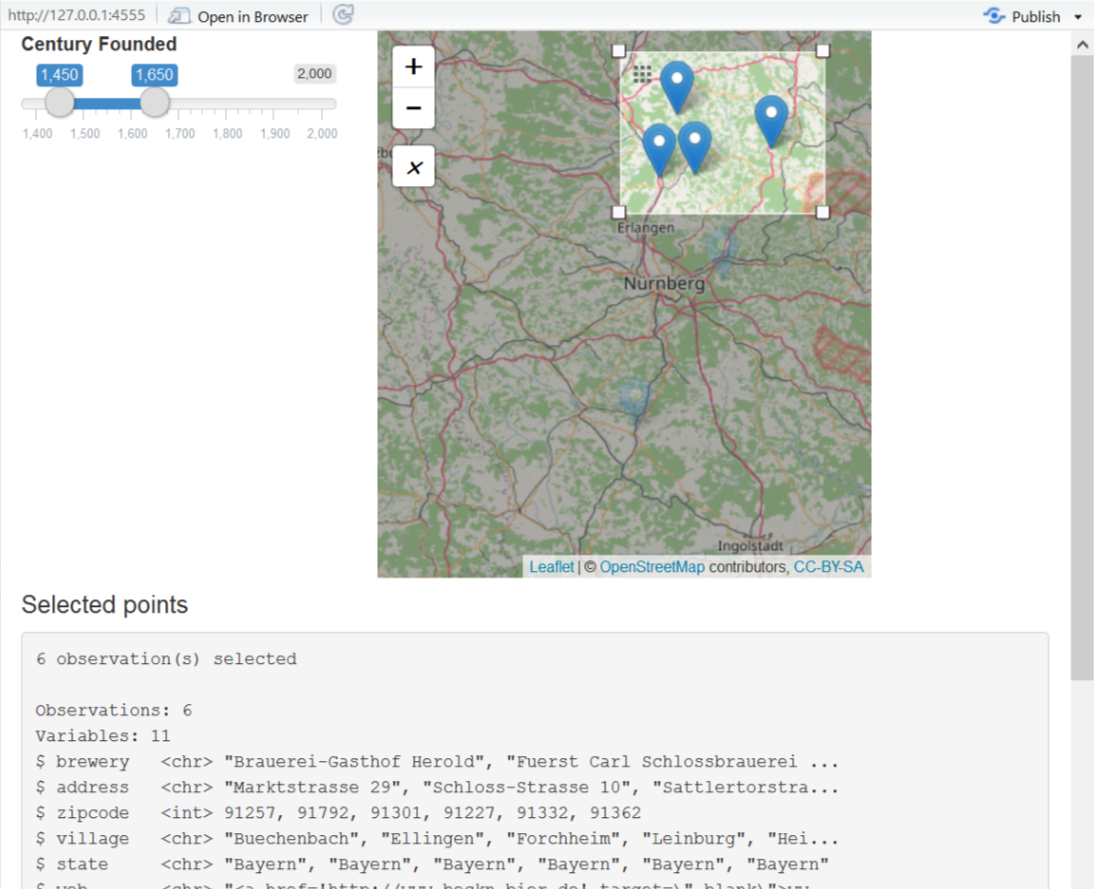
With mapedit, we would like to enhance the geospatial crosstalk
integration to extend beyond leaflet::addCircleMarkers. In addition,
we would like to provide an interactive interface to the geometric
operations of sf, such as st_intersects(), st_difference(), and
st_contains().
Proof of Concept 3
As a select/query proof of concept, assume we want to interactively
select some US states for additional analysis. We will build off Bhaskar
Karambelkar’s leaflet projection
example
using Bob Rudis albersusa
package.
# use @bhaskarvk USA Albers with leaflet code
# https://bhaskarvk.github.io/leaflet/examples/proj4Leaflet.html
#devtools::install_github("hrbrmstr/albersusa")
library(albersusa)
library(sf)
library(leaflet)
library(mapedit)
spdf <- usa_composite() %>% st_as_sf()
pal <- colorNumeric(
palette = "Blues",
domain = spdf$pop_2014
)
bounds <- c(-125, 24 ,-75, 45)
(lf <- leaflet(
options=
leafletOptions(
worldCopyJump = FALSE,
crs=leafletCRS(
crsClass="L.Proj.CRS",
code='EPSG:2163',
proj4def='+proj=laea +lat_0=45 +lon_0=-100 +x_0=0 +y_0=0 +a=6370997 +b=6370997 +units=m +no_defs',
resolutions = c(65536, 32768, 16384, 8192, 4096, 2048,1024, 512, 256, 128)
))) %>%
fitBounds(bounds[1], bounds[2], bounds[3], bounds[4]) %>%
setMaxBounds(bounds[1], bounds[2], bounds[3], bounds[4]) %>%
mapview::addFeatures(
data=spdf, weight = 1, color = "#000000",
# adding group necessary for identification
layerId = ~iso_3166_2,
fillColor=~pal(pop_2014),
fillOpacity=0.7,
label=~stringr::str_c(name,' ', format(pop_2014, big.mark=",")),
labelOptions= labelOptions(direction = 'auto')#,
#highlightOptions = highlightOptions(
# color='#00ff00', bringToFront = TRUE, sendToBack = TRUE)
)
)
# test out selectMap with albers example
selectMap(
lf,
styleFalse = list(weight = 1),
styleTrue = list(weight = 4)
)
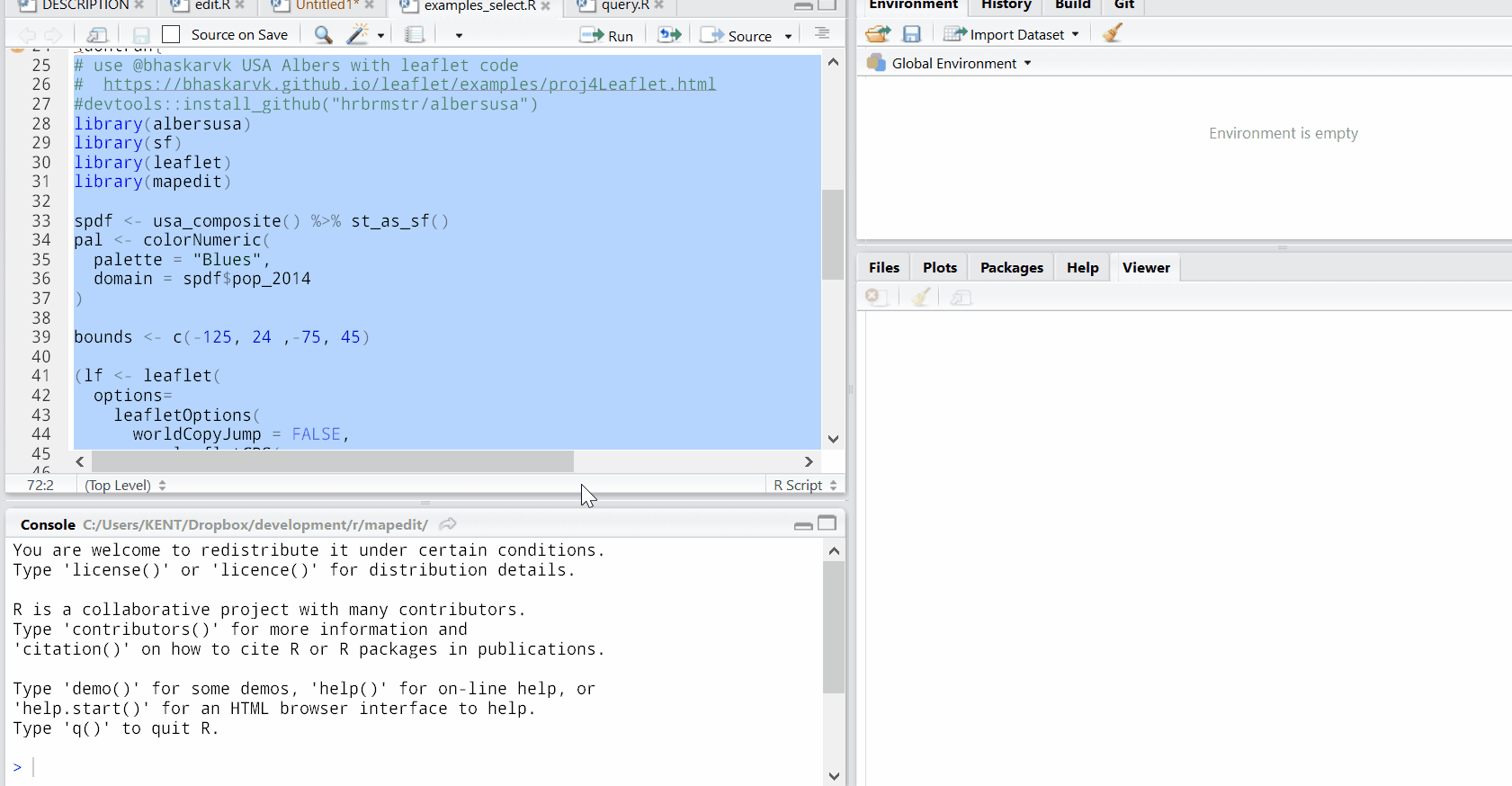
The selectMap() function will return a data.frame with an id/group
column and a selected column. selectMap() will work with nearly all
leaflet overlays and offers the ability to customize the styling of
selected and unselected features.
Editing Attributes
A common task in geospatial analysis involves editing or adding feature
attributes. While much of this can be accomplished in the R console, an
interactive UI on a reference map can often help perform this task.
Mapbox’s geojson.io provides a good reference
point for some of the features we would like to provide in mapedit.
Proof of Concept 4
As a proof of concept, we made a Shiny app that thinly wraps a slightly
modified
geojson.io.
Currently, we will have to pretend that there is a mechanism to load R
feature data onto the map, since this functionality does not yet exist.
library(shiny)
edited_features <- runGitHub(
"geojson.io", "timelyportfolio", ref="shiny"
)
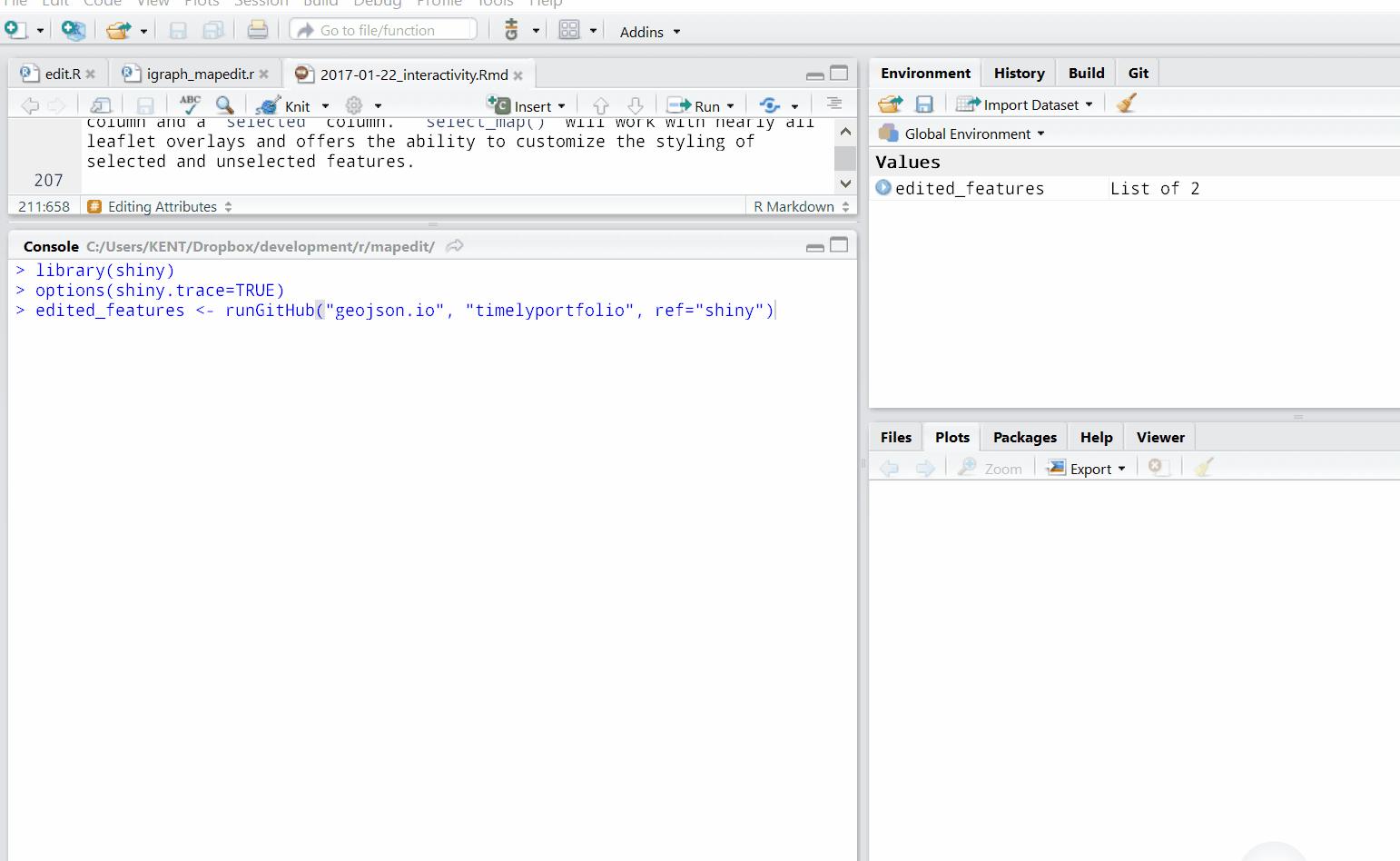
Conclusion
mapedit hopes to add useful interactivity to your geospatial workflows
by leveraging powerful new functionality in R with the interactivity of
HTML, JavaScript, and CSS. mapedit will be better with your feedback,
requests, bug reports, use cases, and participation. We will report on
progress periodically with blog posts on this site, and we will develop
openly on the mapedit Github
repo.
